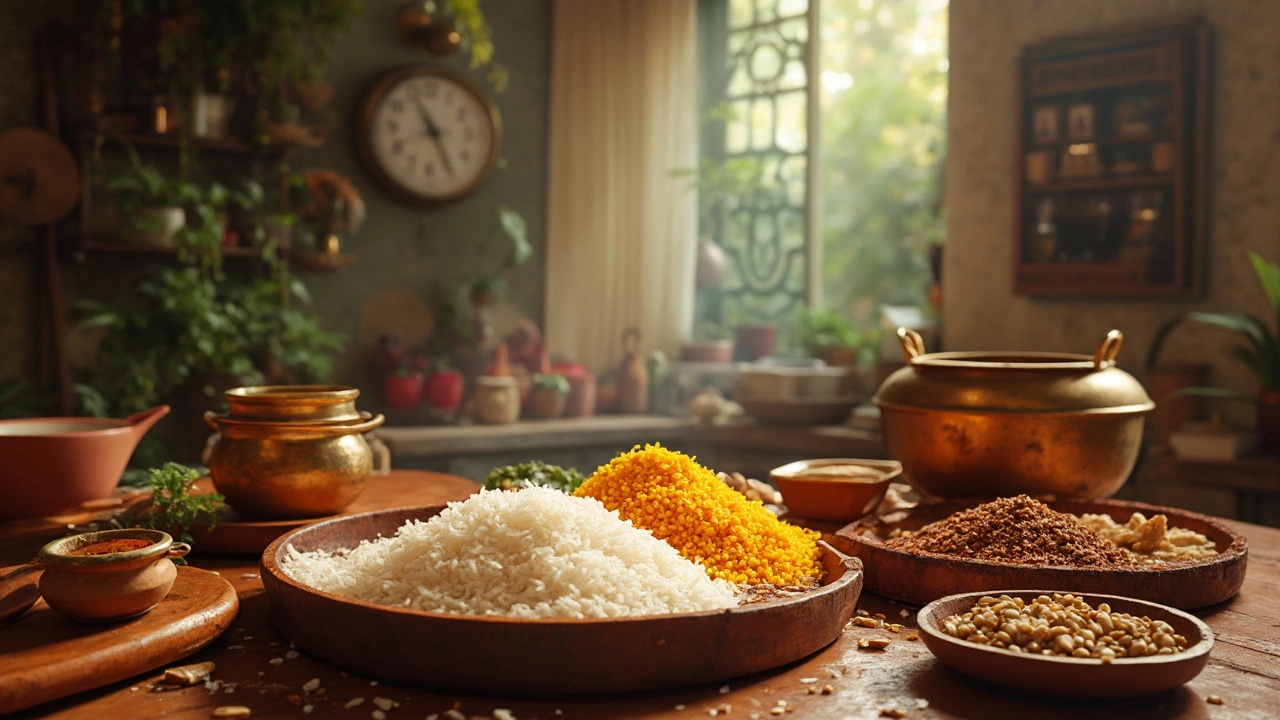Soak Rice for Dosa: Essential Tips for Perfect Batter
When working with soak rice for dosa, the process of immersing rice grains in water before grinding them into a batter for South Indian crepes called dosa. Also known as rice soaking for dosa, it helps soften the rice, reduces grinding time, and kick‑starts the natural fermentation that gives dosas their signature tang and airy texture.
This simple step connects directly to dosa batter, a fermented mix of rice and lentils that forms the base for a wide range of South Indian dishes. The batter requires proper rice soaking, a period of immersion that hydrates starches and releases enzymes that later aid fermentation. Once the rice is soaked, it blends with urad dal, and the resulting mixture undergoes fermentation, a microbial process that produces lactic acid, bubbles, and a mild sour flavor. Adding a splash of curd, plain yogurt that introduces friendly bacteria, can speed up fermentation and improve texture is a common trick in many households. Semantic links are clear: soak rice for dosa encompasses rice soaking; rice soaking enables fermentation; fermentation shapes the final dosa batter. Understanding these relationships helps you troubleshoot flat dosas, overly sour batter, or long waiting times.
Practical Steps and Common Mistakes
First, measure your rice and dal in a 3:1 ratio. Rinse both thoroughly and place the rice in enough water to cover it by at least an inch. Let it sit for 4–6 hours; shorter times work in warm climates, longer in cooler kitchens. While the rice soaks, soak the dal separately for the same duration. After draining, grind the rice to a smooth paste, then the dal to a fluffy batter, and combine them. Transfer the mix to a wide bowl, add a pinch of salt, and optionally a spoonful of curd. Leave the bowl uncovered at room temperature for 8–12 hours. You’ll notice bubbles forming and a pleasant sour scent—signs that fermentation is active. Common pitfalls include using hard water, which can hinder enzyme activity, or skipping the soaking entirely, which leads to a gritty texture and longer grinding time. Another mistake is sealing the bowl too tightly; the batter needs airflow for the microbes to thrive. If your batter turns overly sour, reduce the fermentation window or keep it in a cooler spot. For thinner dosas, add a splash of water just before cooking; for thicker, let the batter rest a few more hours. By mastering the art of soak rice for dosa, you set the foundation for fluffy, crisp crepes that pair perfectly with coconut chutney, sambar, or any topping you like. Below you’ll find a curated list of articles that dive deeper into each step—from why curd matters, to troubleshooting common batter issues, to quick fermentation hacks—so you can keep experimenting and perfecting your dosa game.

How Much Time to Soak Rice and Urad Dal for Dosa?
Making the perfect dosa starts with knowing how long to soak rice and urad dal. This guide covers the ideal soaking times and practical tips to achieve that crispy texture. Soaking times depend on factors like temperature and grain quality, but generally, rice needs 4-6 hours and urad dal 4 hours. Here, we delve into why these times work and what you can do to tweak your dosa-making process.